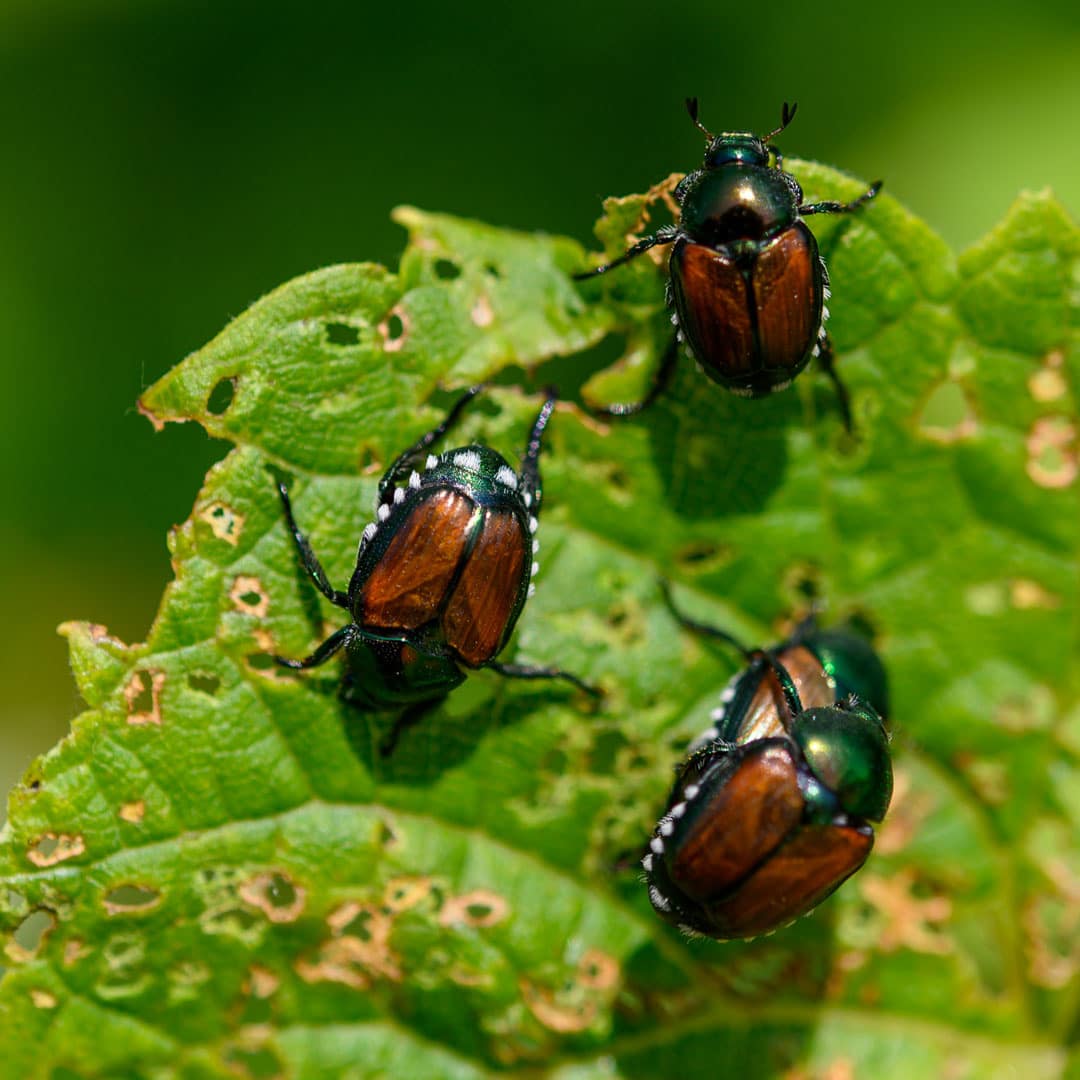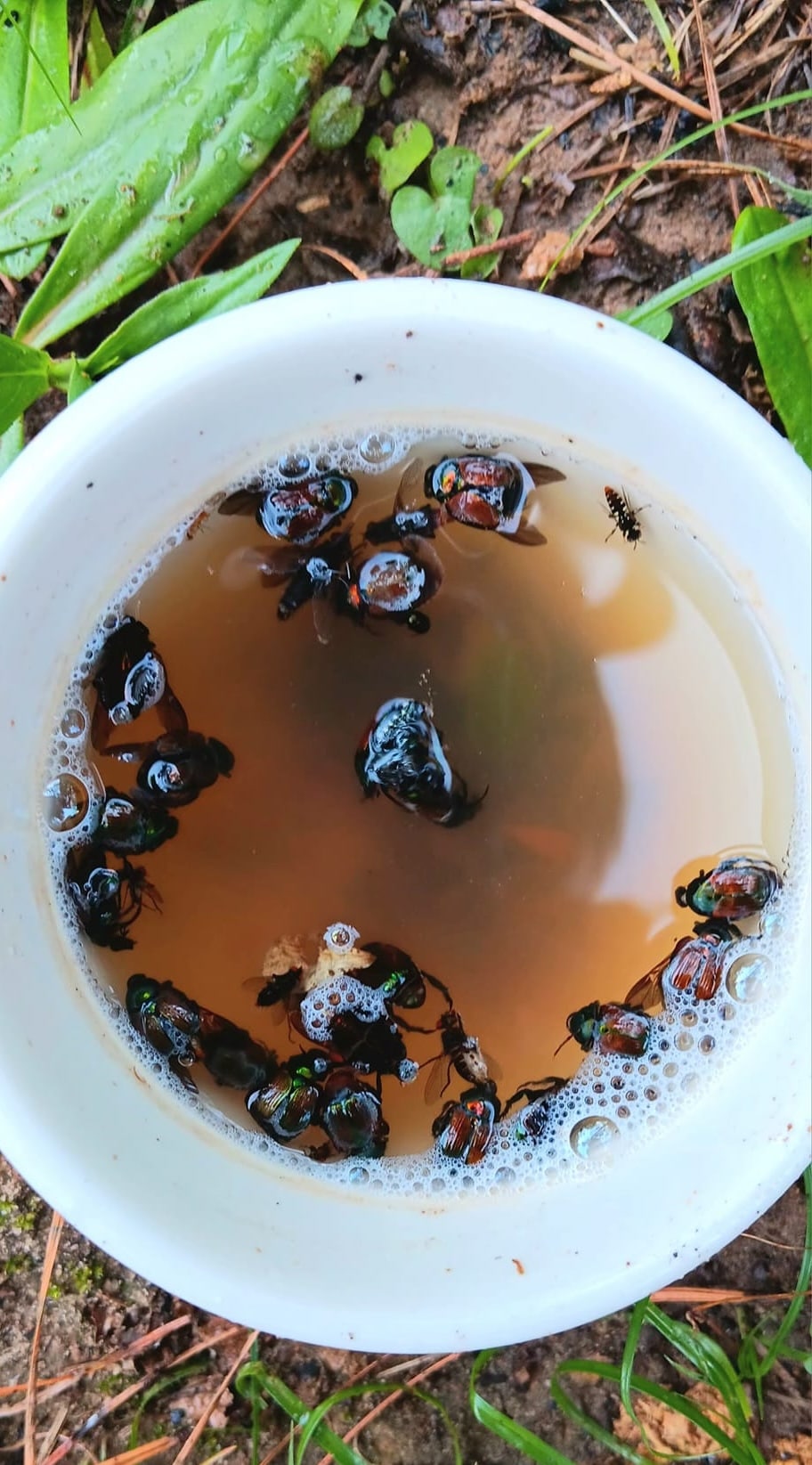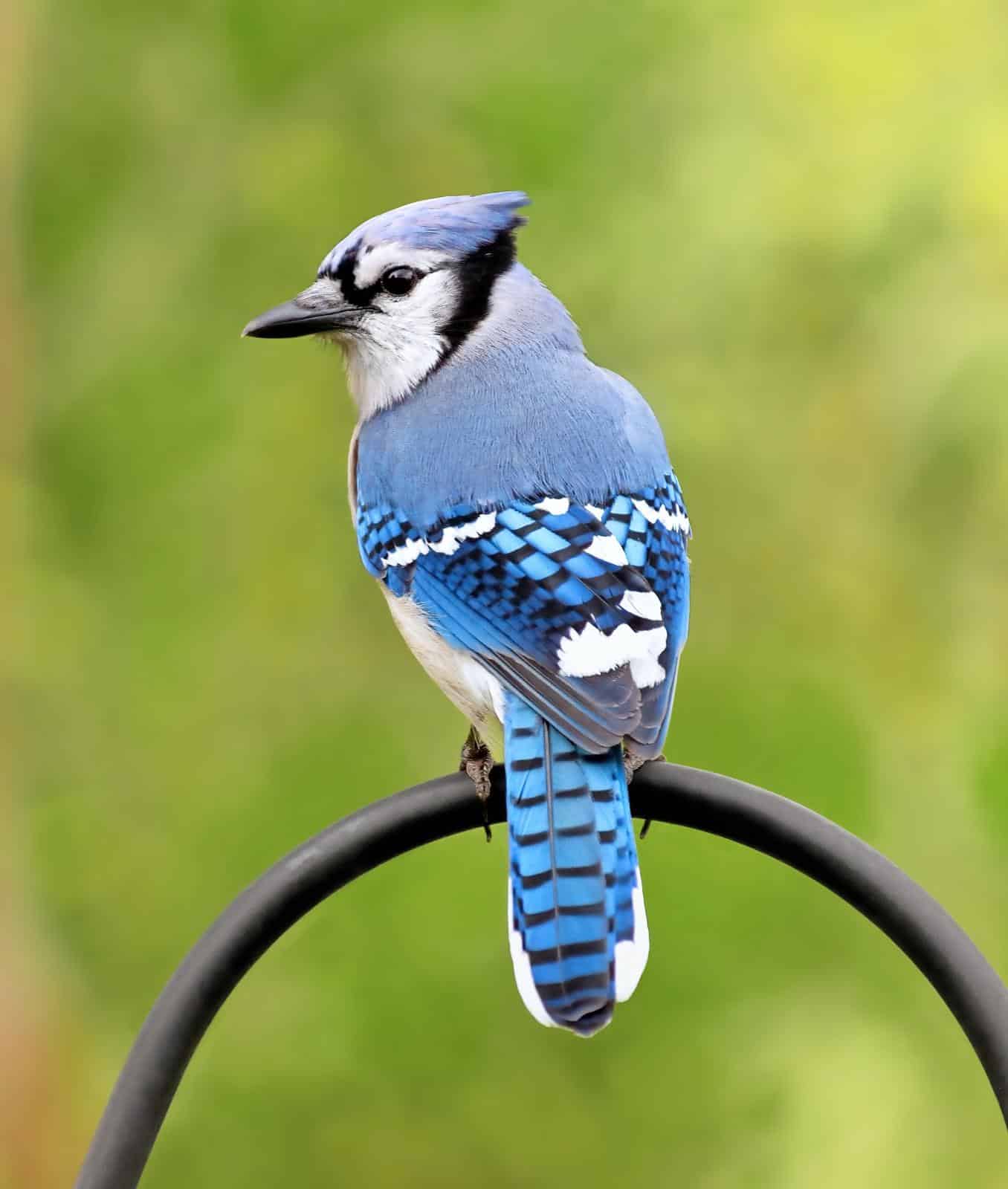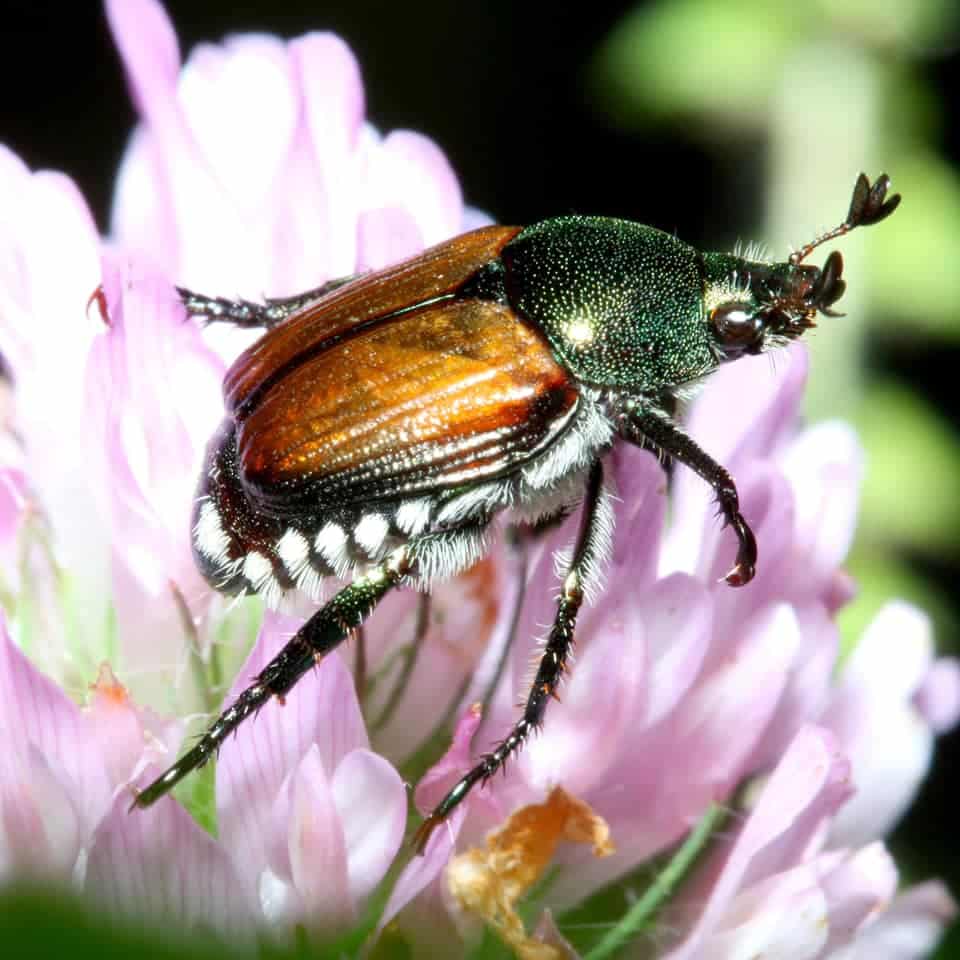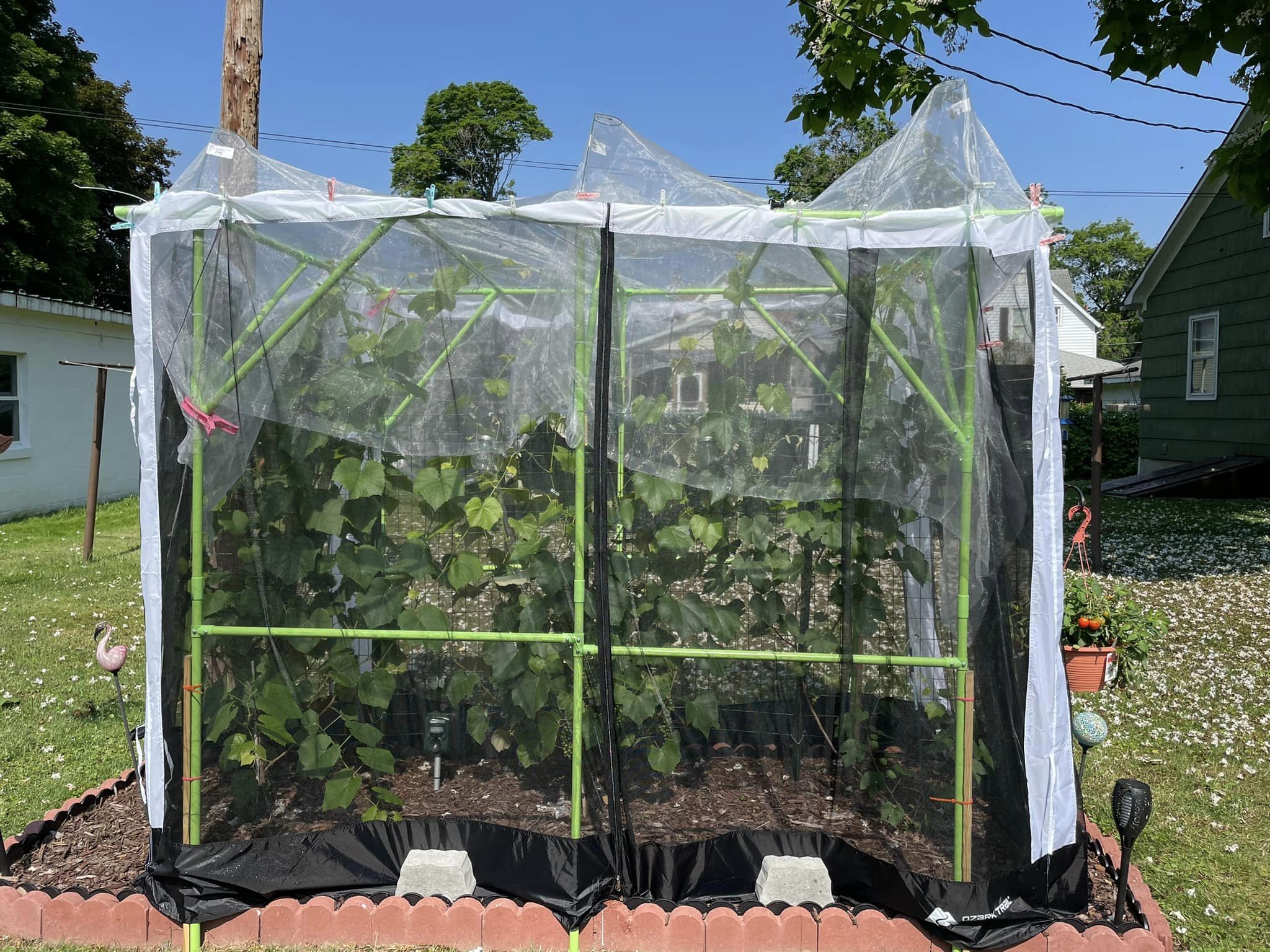Known to feast on more than 300 plant species, Japanese beetles are a formidable pest with a voracious appetite that can wreak havoc on your garden. These insects do not discriminate on what they eat but are usually found on raspberries, roses, beans, and grapes.
These invasive insects are native to Japan but have become a significant concern in many parts of the world, especially in North America, where they lack natural predators. To get the upper hand over Japanese beetles, be persistent and determined.
Find different ways to get rid of Japanese beetles in this guide.
Natural Ways to Get Rid of Japanese Beetles
These methods let you eliminate Japanese beetles using biological agents or techniques that do not harm the environment or non-target species.
1. Hand Pick Them
While labor-intensive and time-consuming, handpicking is the most effective, straightforward, and cost-effective way to kill Japanese beetles. This approach works because it directly removes adult beetles from your plants, thereby reducing their ability to feed, mate, and lay eggs.
Handpick these insects early in the morning and late in the evening, as they’ll be easier to catch. Gently pick the beetles off the plants by hand.
Alternatively, place a cardboard or a paper plate under the plant and tap the leaves gently to dislodge the beetles. The beetles will fall onto the plate, and you can then transfer them to the soapy water, where they will drown within a few minutes.
2. Introduce Japanese Beetles’ Natural Enemies
Attract and support the natural predators of Japanese beetles to reduce their numbers and protect your garden. Birds are quite effective, with various bird species feeding on adult beetles and their larvae. Starlings, Robins, Blue Jays, and Cardinals feed on these insects.
Several insect and arthropod species, like tachinid flies, ground beetles, and parasitic wasps, are also natural enemies of Japanese beetles. Create an environment that supports a thriving predator population through diverse planting, creating layers of vegetation, avoiding frequent tilling and heavy mulching, minimizing chemical use, and providing water.
3. Milky Spore Disease
This naturally occurring bacterium caused by Paenibacillus popilliae infects and kills Japanese beetle larvae (grubs) in the soil. When grubs ingest the spores while feeding on grassroots, they germinate inside their bodies, multiplying and causing the larvae to develop a milky white appearance.
This infection eventually kills the grubs, releasing millions of new spores into the soil, which can infect additional grubs. Apply milky spore powder in late summer to early fall when Japanese beetle grubs actively feed near the soil surface. If necessary, you can make applications in the spring.
Read More:
- How To Get Rid Of Whiteflies On Plants
- How To Get Rid Of Slugs And Snails In Garden Naturally
- How To Get Rid Of Mealybugs Naturally
4. Beneficial Nematodes
Beneficial nematodes, specifically Heterorhabditis bacteriophora, are effective against Japanese beetle larvae. These nematodes seek out and enter the grubs through openings. They release symbiotic bacteria once inside, causing the host’s death in 24-48 hours.
The nematodes then reproduce within the dead grub, and their offspring emerge to seek out new hosts, continuing the cycle of infection. Purchase fresh nematodes from a reputable supplier, mix them with water per the package instructions, and apply the solution with a garden sprayer.
Water the soil before and after application.
5. Insecticidal Soaps
Spray insecticidal soap directly on Japanese beetles. The soap disrupts their cell membranes, leading to dehydration and death. While these soaps are particularly effective against soft-bodied insects, they can also impact the Japanese beetles’ outer shell, especially in their larval stages.
Insecticidal soaps must come into direct contact with the beetles to work. This requires thorough and repeated applications, especially in dense foliage. Since insecticidal soaps don’t have residual activity, they only kill insects present at the time of application.
6. Apply Neem Oil
Spray neem oil on your plants to reduce Japanese beetles’ feeding. Neem oil contains several active compounds that help control pests. Azadirachtin is neem oil’s most potent compound.
Azadirachtin interferes with the hormones that regulate insect growth and reproduction. This prevents larvae from maturing and adults from laying eggs. When adult Japanese beetles ingest neem oil, they pass the chemicals to their eggs, causing the larvae to die before adulthood.
Neem oil also makes plants unpalatable to pests. Apply neem oil during cooler parts of the day to maximize impact. When used correctly, neem oil has low toxicity to humans, beneficial insects, and pets. However, it can harm aquatic life and fish.
Chemical Control for Japanese Beetles
Chemicals can also help eliminate Japanese beetles. These methods are effective but should be used judiciously to minimize adverse impacts on the environment.
i) Pyrethrin-based Insecticides
Derived from the chrysanthemum flower, pyrethrin-based insecticides help control various pests, including Japanese beetles. Pyrethrins target the nervous system, paralyzing and killing the insect shortly after contact. They interfere with the sodium channels in nerve cells, leading to a rapid knockdown effect.
Go for these insecticides to knock down and kill Japanese beetles quickly. Spray the insecticide directly on Japanese beetles. In addition, focus on areas where these insects are most active, such as the upper leaves, flowers, and new growth, thoroughly coating all the surfaces.
Do not spray pyrethrin-based insecticides on flowering plants during bloom to protect pollinators. If necessary, apply in the evening when pollinators are less active.
ii) Systemic Insecticides
Are you looking for a powerful, long-term solution against Japanese beetles? Try systemic insecticides. They offer extended protection, often lasting weeks or months. Common systemic insecticides for Japanese beetle control include imidacloprid, dinotefuran, and thiamethoxam.
Spray systemic insecticides on plants highly susceptible to Japanese beetle damage, such as roses, linden trees, and grapevines. The plant’s roots or leaves will absorb the chemicals, which are then translocated throughout its tissues.
When Japanese beetles feed on the treated plant, they ingest the insecticide, which interferes with their nervous system, leading to paralysis and death. Since the insecticide is contained within the plant, it specifically targets pests that feed on it, minimizing impact on non-target organisms.
Apply systemic insecticides in late summer to early fall when the grubs are young and close to the soil surface, making them more susceptible to insecticides. You can also target Japanese beetles in early spring before they become too large and before they cause significant root damage.
Systemic insecticides can harm pollinators if you apply them improperly, so avoid using them on flowering plants or during bloom. Also, use them judiciously because they can linger in the environment.
How To Prevent Japanese Beetles
You can lower the damage Japanese beetles cause and massively reduce their numbers through preventative measures.
a) Proper Plant Selection
Japanese beetles have a broad palate, but they exhibit preferences for certain plants over others. They tend to favor plants with fragrant flowers, lush foliage, and smooth leaves. You can design a garden that’s less appealing to Japanese beetles if you know which plants are highly susceptible and which are resistant to them.
Japanese beetle-resistant or less attractive plants include boxwood, dogwood, red maple, lilac, pines, spruce, magnolia, yews, and euonymus. On the other hand, plants that are highly susceptible to these insects include roses, linden trees, Japanese maple, hibiscus, cherry trees, grapes, apple trees, crape myrtle, and birch trees.
If you must grow plants that Japanese beetles find attractive, place them in areas where you can easily monitor and protect them.
b) Use Physical Barriers
Keep Japanese beetles from reaching your plants by erecting physical barriers. Install barriers early in the season before Japanese beetles become active. Physical barriers are non-toxic, effective, and cost-effective.
Types of barriers to use to keep Japanese beetles out are:
- Row Covers: Drape lightweight fabric covers over plants to prevent beetles from landing on them. Remove the covers during bloom periods if the plants require pollination.
- Fine Netting: Place mesh netting over plants to keep beetles out while allowing sunlight, air, and water to pass through.
- Screens: Enclose plants, particularly small trees and shrubs, in metal or plastic screens.
- Bagging Fruit: Place individual bags over the fruits on trees or bushes.
c) Companion Planting
Protect your plants from Japanese beetles with this age-old gardening practice. For instance, integrate repellent plants like garlic, chives, and catnip among your susceptible plants to confuse and deter Japanese beetles.
You can also create a barrier that repels Japanese beetles before they reach your main crops by planting tansy, rue, and marigolds around your garden’s perimeter. In addition, consider luring Japanese beetles away from your valuable plants by planting highly attractive plants, such as white geraniums, away from your main garden area as trap crops.
d) Keep The Plants Healthy
Rotting plants and overripe fruits attract Japanese beetles. So, harvest fruits regularly and ensure your plants are robust and vigorous. Choose plants suited to your climate, soil type, and garden conditions, and start your garden with healthy, disease-free plants.
Improve soil health with organic matter and compost. Also, water and fertilize your plants appropriately to promote deep root growth. Moreover, remove plant debris, fallen leaves, and weeds that harbor pests and diseases.
Final Remarks
Your battle with Japanese beetles requires a multifaceted approach that includes prevention and control methods. It’s best to curb a Japanese beetle invasion early, but should that fail, there are tried-and-true approaches to get rid of these destructive insects. However, avoid traps because they sometimes invite more Japanese beetles than they capture.

I’m Mike Hyle, an exterminator with 7+ years of experience handling all sorts of pests, including mice, cockroaches, bed bugs, and termites. I also write for Pest Solutions DIY blog to share my knowledge and help homeowners keep their homes pest-free. Outside work, I enjoy hunting, snowshoeing, and exploring nature. Check out my blog for helpful pest control tips!

